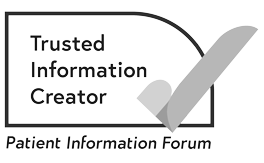Liver biopsy
A liver biopsy is a test used to help diagnose primary liver cancer and secondary liver cancer.
What is a liver biopsy?
You may have a small piece of tissue taken from the liver to be looked at under a microscope. This is called a liver biopsy.
Doctors can often diagnose primary liver cancer (also called hepatocellular carcinomaa or HCC) with scans. Or they may diagnose it after surgery to remove the tumour.
Sometimes a liver biopsy is done to diagnose a secondary cancer in the liver.
Not everyone needs a biopsy. Your doctor will explain if they think a biopsy would be helpful in your situation.
They will talk to you about what is involved and the possible risks of a liver biopsy before you have it. This includes a small risk of bleeding and infection. You will have blood tests before the biopsy to make sure your blood is clotting properly.
If you are worried about liver cancer and would like to talk to someone, we are here. You can:
- Call the Macmillan Support Line for free on 0808 808 00 00.
- Chat to our specialists online.
- Visit our liver cancer forum to connect with people who have been affected by liver cancer, share your experience, and ask your questions.
What happens during a liver biopsy?
When you have the biopsy, you have a local anaesthetic injection into the skin to numb the area. The doctor then passes a fine needle through the skin and into the tumour. They remove a small piece of tissue.
A CT scan or ultrasound scan guides the doctor to the exact area to take the biopsy from.
After a liver biopsy
After a liver biopsy, you need to stay in hospital for a few hours, or sometimes overnight. The nurses check you regularly and monitor your blood pressure. This is to make sure there is no bleeding and that it is safe for you to go home.
You may have some pain in your tummy and right shoulder after the biopsy. Your doctor can prescribe painkillers for you.
Waiting for test results
Waiting for test results can be a difficult time. It may take from a few days to a couple of weeks for the results to be ready.
You may find it helpful to talk with your partner, your family or a close friend. Your specialist nurse or a support organisation can also provide support. Or you can talk to one of our cancer support specialists for free on 0808 808 0000, 7 days a week, 8am to 8pm.
About our information
This information has been written, revised and edited by Macmillan Cancer Support’s Cancer Information Development team. It has been reviewed by expert medical and health professionals and people living with cancer.
-
References
Below is a sample of the sources used in our primary liver cancer information. If you would like more information about the sources we use, please contact us at informationproductionteam@macmillan.org.uk
ESMO Guidelines Committee. Updated treatment recommendations for hepatocellular carcinoma (HCC) from the ESMO Clinical Practice Guidelines. eUpdate. March 2021. Available from: www.esmo.org/guidelines/guidelines-by-topic/esmo-clinical-practice-guidelines-gastrointestinal-cancers/hepatocellular-carcinoma-esmo-clinical-practice-guidelines-for-diagnosis-treatment-and-follow-up/eupdate-hepatocellular-carcinoma-treatment-recommendations [accessed April 2023].
Huang QD, Teng MLP. Hepatocellular carcinoma – symptoms, diagnosis and treatment. BMJ Best Practice Guidelines. 2022. Available from: www.bestpractice.bmj.com/topics/en-gb/369 [accessed March 2023].
Vogel A, Cervantes A, Chau I, Daniele B, Llovet JM, Meyer T, et al. Hepatocellular carcinoma: ESMO Clinical Practice Guidelines for diagnosis, treatment and follow-up. Annals of Oncology. 2018;29(4): 238–255. Available from: www.doi.org/10.1093/annonc/mdy308 [accessed April 2023].
Date reviewed

Our cancer information meets the PIF TICK quality mark.
This means it is easy to use, up-to-date and based on the latest evidence. Learn more about how we produce our information.
The language we use
We want everyone affected by cancer to feel our information is written for them.
We want our information to be as clear as possible. To do this, we try to:
- use plain English
- explain medical words
- use short sentences
- use illustrations to explain text
- structure the information clearly
- make sure important points are clear.
We use gender-inclusive language and talk to our readers as ‘you’ so that everyone feels included. Where clinically necessary we use the terms ‘men’ and ‘women’ or ‘male’ and ‘female’. For example, we do so when talking about parts of the body or mentioning statistics or research about who is affected.
You can read more about how we produce our information here.





